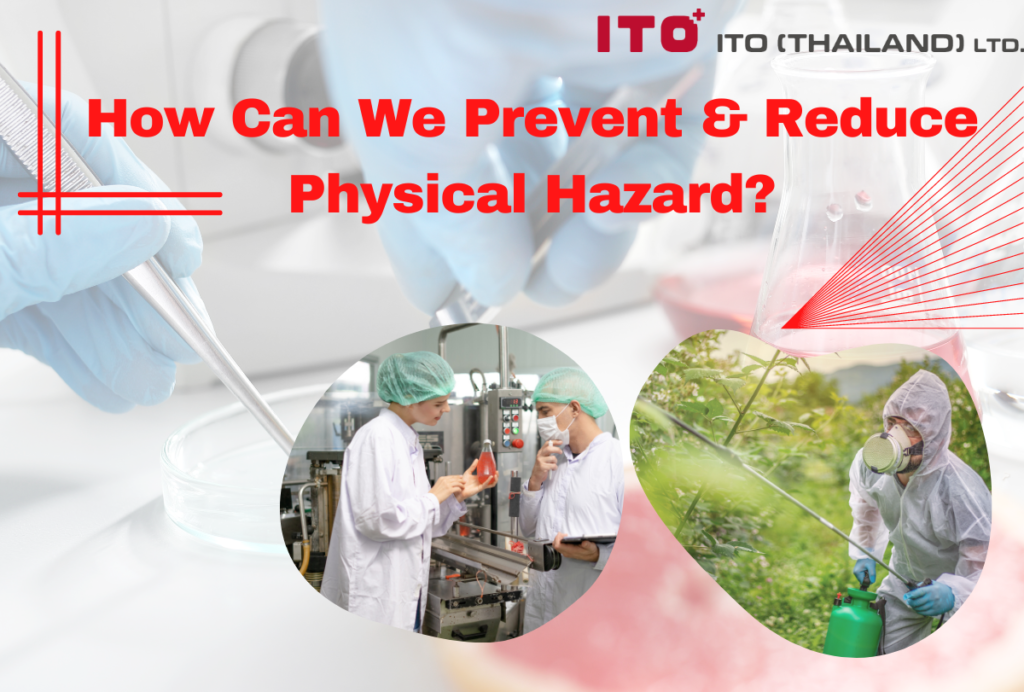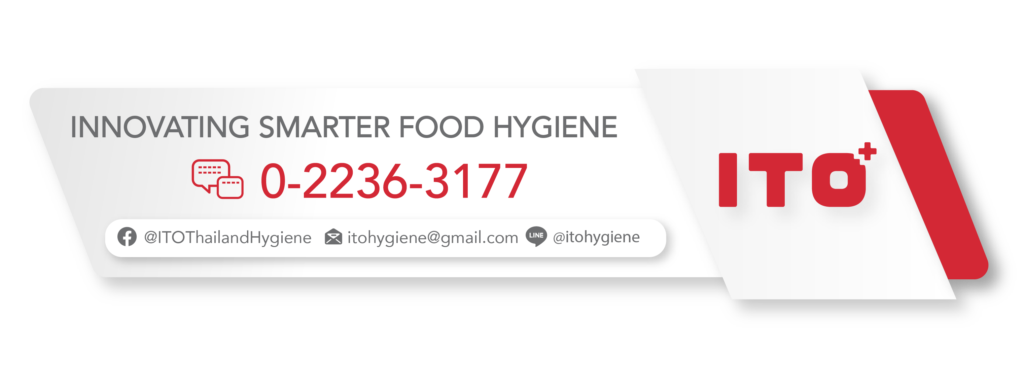ITO Thailand Hygiene Blog
Physical Hazard Prevention & Reduction
In the previous content, we learned about physical hazards commonly found in the food industry. This time, we would like to introduce techniques and methods for reducing physical hazards categorized by their sources as follows:
1.Managing raw materials
Contamination from raw materials has a high chance of appearing in the final product since the contamination is already in the food. Therefore, the operators must require that the raw materials used in food production come from a good source with standards for production, planting, harvesting, etc. They may request certification documents such as Good Agricultural Practices (GAP), a checklist, or a quality certificate letter. They may also conduct an audit of raw material production at the raw material production site and determine the raw material specification that is suitable for the acceptable amount of contamination [1].
When the raw materials are transported to the production site and inspected according to the established standards, they should be stored in a dedicated storage area that is not mixed with the final product and can prevent contamination from the external environment when the raw materials are used. There should be a policy to prevent contamination from the packaging of raw materials, such as the way the bag is cut, inspection of bags, labels or packaging when moving in and out. Additionally, managing raw materials should conform to good hygienic standards in production. Care should be practiced in the process of separating hard objects from raw materials such as pitting fruit seeds, dissecting animal bones, sea shelling, shelling of nuts, etc. In cases where the product is at a high risk of physical contamination, additional physical hazard removal procedures may be considered (Read more in Section 4).
2.Managing employees
Preventing contamination from the employees in the food manufacturing process includes setting up a policy to prevent unwanted material being brought into production (eg pen caps, fake nails, buttoned shirts, accessories, food and beverages from outside etc.) with strictly enforced rules, measures, employee dress check, providing sufficient additional risk-reducing equipment to the number of employees as appropriate to the circumstance. Such additional equipment is hair caps, masks, aprons, gowns, shoes, lockers, personal storage, a shoe rack, plasters in distinct colors, gloves for putting over plasters, etc., to facilitate the employees’ good practice. Additional contamination prevention procedures may be prepared, such as rolling the rollers or using a vacuum cleaner to get rid of dust and hair, using air showers, washing shoes, installing mats that trap dust and contaminants, etc. The employees should also be trained to become aware of the importance of food safety to create understanding, awareness, and good food safety culture in the organization. Furthermore, new technologies may be considered to help reduce the risk of contamination from the employees (Read more in Section 5).
3.Managing tools, equipment, and machines
Tools, equipment, and machines should be designed with good hygiene in mind and should have minimal parts that may contaminate food products. For instance, avoid the use of easily broken glass. There should also be measures to inspect the integrity of equipment and machines, and measures to take when detecting damage or the risk of contamination. Maintenance should be scheduled so that the tools, equipment, and machines are in a ready-to-use condition. As for machines with metal components, if the metals are in contact, there is a potential for breakage and contamination into food products [2], which a magnet or a metal detector can be used for safety inspections.
4.Managing surroundings
The food production area must be clean. Suitable materials that do not accumulate dirt and break easily, contaminating the products, must be used. The area must be designed to be easy to clean and disinfect. The wall surface must be smooth, not chipped or peeling. The ceiling is clean, free from rust, cobwebs, dust, or other materials that may contaminate food [1]. The floor area is intact. Tiles are not broken, no rock or soil fragments that may cause contamination. Maintenance may be scheduled to always keep the production area in a good condition.
In addition to the building materials, other surroundings can also be a source of physical contamination. They must be managed properly: pest management, waste management, water and sewage management, trees, light bulbs, etc.
In addition, reducing the risk of external contamination at the entrance and exit of the food production area may be considered: installing an air curtain or high-speed doors to reduce the risk of contamination from the external environment.
5.Adding steps and technology to prevent and reduce the risks of physical hazards
In the food production process exposed to a risk of contamination, additional steps may be considered to eliminate hazards or reduce the risk of physical contamination using various technologies. The examples are as follows:
>Separation using the principle of difference in size, weight, or density to remove contaminants from raw materials or products such as filtering, sieving, separating wood chips and rocks from food raw materials, air blowing, soaking in water or washing medium, etc.
>Using a magnet or metal detector to isolate potentially contaminated metals in the products. In this regard, non-metallic contaminants such as plastic, bones, glass shards, etc. cannot be detected. In addition, there are still many factors that affect the sensitivity of metal detection, such as salt and ion content in the products, temperature, food structure, and packaging, etc. [3]
>Using waves and rays
Waves and rays such as X-rays, microwaves, ultrasound, NMR (Nuclear magnetic resonance), etc. are often used to measure contamination in non-metal products such as bone fragments, plastic fragments, glass shards, etc. Examples of use include using x-rays to detect contamination of poultry bone fragments in the food industry, inspection of worms in grains, nuts, and fruits, etc. [4]
>AI systems
Nowadays, AI systems play a role in reducing contamination and physical contamination. Whether they are used in combination with other detectors (such as metal detectors, wave, and radiation devices) to enable the systems to learn the differences between the products and the contaminants, using the AI Vision system in conjunction with cameras to detect contamination instead of requiring the employees observe, for instance, the wrong color or appearance of the food, examine how the employees are dressed, employee hand washing monitoring, etc. (Learn more about the AI Vision system here.)
References
1.Simons. nd. HOW TO CONTROL PHYSICAL HAZARDS. Online: https://cwsimons.com/how-to-control-physical-hazards/
2.USFDA.2016.Hazard Analysis and Risk-Based Preventive Controls for Human Food: Draft Guidance for Industry. Online: https://www.fda.gov/files/food/published/Draft-Guidance-for-Industry–Hazard-Analysis-and-Risk-Based-Preventive-Controls-for-Human-Food—Potential-Hazards-Associated-with-the-Manufacturing–Processing–Packing–and-Holding-of-Human-Food-%28Chapter-3%29-Download.pdf
3.Food Safety Knowledge Centre. nd. Metal Detectors in the Food Industry. Online: https://www.gov.mb.ca/agriculture/food-safety/at-the-food-processor/food-safety-program/pubs/fs_9.pdf
4.Ronald P. Haff; Natsuko Toyofuku (2008). X-ray detection of defects and contaminants in the food industry. , 2(4), 262–273.
Related Post
-
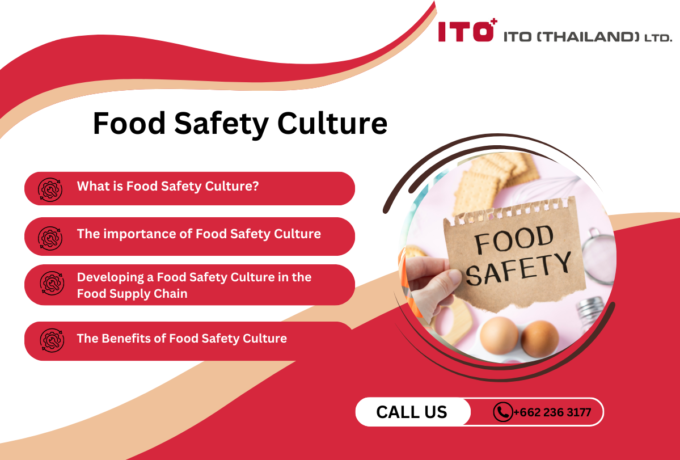
Food Safety Culture
Food safety culture plays a crucial role in safeguarding the company's reputation, ensuring the well-being of its employees, and providing a safe experience for its customers.
-
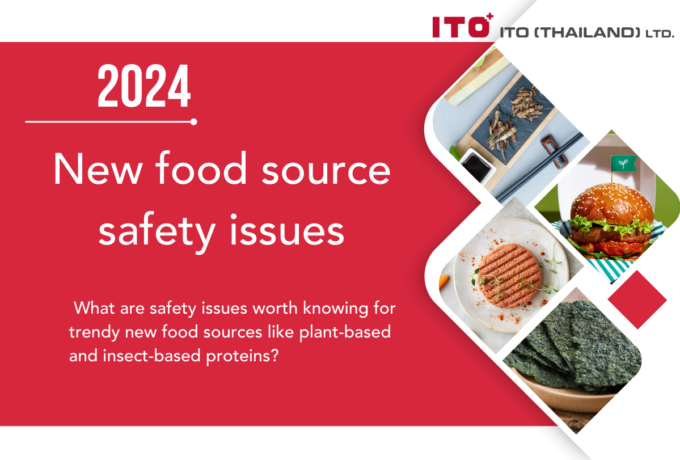
New food source safety issues
What are safety issues worth knowing for trendy new food sources like plant-based and insect-based proteins?
-

British Retail Consortium (BRC) Standard
Food safety management systems play a vital role in ensuring the production and distribution of safe and high-quality food products to consumers. With the global food supply chain becoming increasingly complex, food businesses must implement effective systems prioritising safety, quality, and compliance with industry standards. A food safety management system encompasses a set of procedures, processes, and controls designed to identify, prevent, and manage potential hazards at every stage of the food production and supply process. This proactive approach not only safeguards consumers' health but also protects the reputation and credibility of food companies in an ever more competitive market.
-
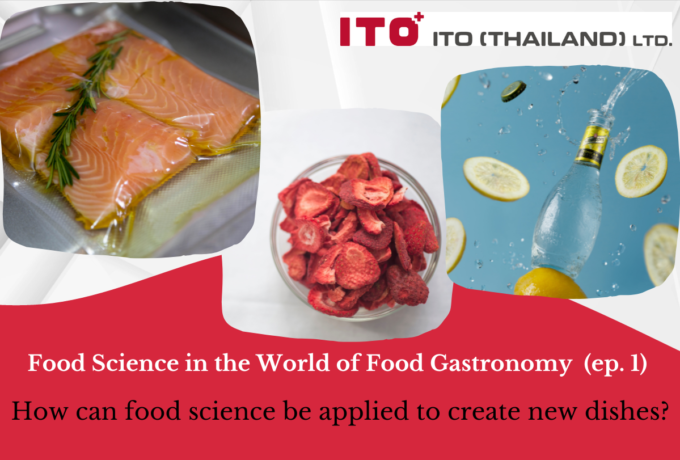
Food Science in the World of Food Gastronomy (Part 1)
How can food science be applied to create new dishes?
-
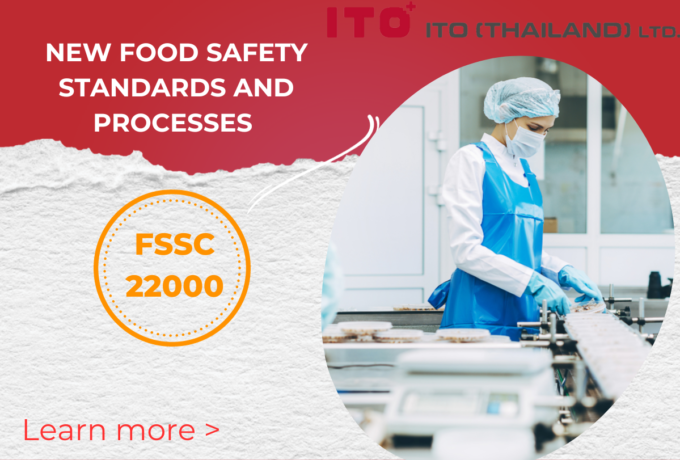
FSSC 22000
Food manufacturers must ensure food safety standards and processes. FSSC 22000 is an official certification program for Food Safety Management Systems (FSMS) recognised by the Global Food Safety Initiative (GFSI). This certification scheme offers a set of guidelines and procedures to ensure uniformity, openness, and safety across your entire supply chain. It applies to all companies operating within the food and beverage industry, ranging from farmers to retailers. By fulfilling the necessary criteria and obtaining FSSC 22000 certification, it is demonstrated that the required standards for food quality and implementing effective processes to manage and mitigate risks associated with food fraud, foodborne illnesses, expensive recalls, and other external threats are met.
-

Food Safety Aspects of Artificial Sweeteners
Artificial sweeteners, also known as sugar substitutes, non-nutritive sweeteners, or high-intensity sweeteners, are artificially produced compounds utilised in place of sucrose (table sugar) to add sweetness to food and drinks. Due to their significantly higher sweetness than regular sugar, only a fraction of artificial sweeteners (200 to 20,000 times less) is required to achieve an equivalent level of sweetness. Since the caloric contribution of these sweeteners, when used in such small quantities, is insignificant, they are often referred to as non-nutritive (4).








